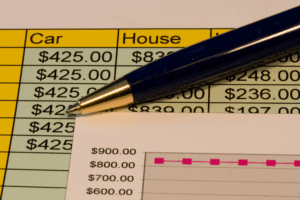
This can help to lower their tax liability and increase their after-tax income. In general, anyone who is looking to reduce their tax liability and improve their financial situation can benefit from tax shields. It’s important to note that tax shields are subject to tax laws and regulations. Taxpayers must comply with these laws and regulations to ensure that the deductions and credits claimed are valid and that they are not subject to any penalties or fines for non-compliance. It’s always a good idea to consult with a tax professional or accountant to ensure that you are taking advantage of all available tax shields and complying with tax laws.
Quick Note: What is Debt?
The factor of (1-t) reduces the debt component which results in a lower WACC which Medical Billing Process in turn results in a higher present value of net cash flows. Let us take the example of another company, PQR Ltd., which is planning to purchase equipment worth $30,000 payable in 3 equal yearly installments, and the interest is chargeable at 10%. The company can also acquire the equipment on lease rental basis for $15,000 per annum, payable at the end of each year for three years. The original cost of the equipment would be depreciated at 33.3% on the straight-line method. The concept of depreciation tax shield would not be relevant in a country, state or province whose tax jurisdiction does not permit companies to use depreciation as a tax admissible expense.

How Is Tax Shield Interest Calculated?
- MACRS depreciation table will assist you to accelerate cost recovery benefits easily.
- Since depreciation is a non-cash expense and tax is a cash expense there is a real-time value of money saving.
- For example, if a company has cash inflows of USD 20 million, cash outflows of USD 12 million, its net cash flows before taxation work out to USD 8 million.
- Since interest payments are tax-deductible, the cost of debt needs to be multiplied by (1 – tax rate), which is referred to as the value of the tax shield.
- Taxpayers can deduct state and local income, sales, and property taxes from their taxable income.
- A tax rate can be understood as a fraction at which a single or corporation pay tax or dues.
Meanwhile, the company maintains its own depreciation calculations for financial statement reporting, which are more likely to use the straight-line method of depreciation. This alternative treatment allows for the use of simpler depreciation methods for the preparation of financial statements, which can contribute to a faster closing process. The shortened definition of a Tax Shield is any item that can lower taxable income while also lowering the taxes a person must pay.
Examples of Tax Shield
Tax credits are offered for a variety of purposes, such as investments in certain industries, research and development, and energy efficiency. A 25 % depreciation for plant and machinery is available on accelerated depreciation basis as Income tax exemption. Assume that the corporate tax is paid one year in arrear of the periods to which it relates, and the first year’s depreciation allowance would be claimed against the profits of year 1. For example, if a company has an annual depreciation of $2,000 and the rate of tax is set at 10%, the tax savings for the period is $200. We note from above that the Tax Shield has a direct impact on the profits as net income will come down if depreciation expense is increasing, resulting in less tax burden. We note that when depreciation expense is considered, EBT is negative, and therefore taxes paid by the company over the period of 4 years is Zero.

Therefore, the tax shield can be specifically represented as tax-deductible expenses. The sum by which depreciation shields the taxpayer from income taxes is the appropriate tax rate. Anyone depreciation tax shield preparing to use the depreciation tax shield should deliberate the use of accelerated depreciation. A tax shield represents a reduction in income taxes which occurs when tax laws allow an expense such as depreciation or interest as a deduction from taxable income. Depreciation tax shields are important because they can improve a company’s cash flow by reducing its tax liability. They also make capital-intensive investments more attractive because the higher the investment in depreciable assets, the greater the potential tax shield.
Depreciation Tax Shield Calculation Example
For Scenario A, the depreciation expense is set to be zero, whereas the annual depreciation is assumed to be $2 million under Scenario B. In the final step, the depreciation expense — typically an estimated amount based on historical spending (i.e. a percentage of Capex) and management guidance — is multiplied by the tax rate. The recognition of depreciation causes a reduction to the pre-tax income (or earnings before taxes, “EBT”) for each period, thereby effectively creating a tax benefit. Under U.S. GAAP, depreciation reduces the book value of a company’s property, plant, and equipment (PP&E) over its estimated useful life. With over 20 years of experience, TaxShield and our Chartered Quantity Surveyors have completed tens of thousands of reports.
The tax shield significantly influences capital structuring decisions by reducing taxable income and lowering the cost of capital. When deciding between debt or equity financing, the tax shield often makes debt more attractive due to its tax-deductible interest payments. Depreciation tax shield can dramatically impact the NPV of a proposed project, especially when the company’s tax rate is higher and the project involves the use of costly fixed assets. Commercial entities extensively tend to outsource their tax returns task to tax firms. These independent tax firms keep themselves update to deal with all tax fixed assets related matters and have special expertise in preparing tax returns for almost all types of companies and individuals. They evaluate all permissible depreciation methods and choose the one that results in maximum depreciation tax shield for the tax returns of their client company.

Why Does the Depreciation Tax Shield Matter?

Alongside her accounting practice, Sandra is a Money and Life Coach for women in business. Not only are you paying the principal balance, but you’re also responsible for the interest. You can figure out what the cost of debt is by multiplying the value of your loan by the annual interest rate. By comparing the above two options calculated, we concluded that the present value in the case of buying by taking a tax shield is lower than the lease option. With the two methods clarified, let’s look at the Cash Flow impact of each approach.
